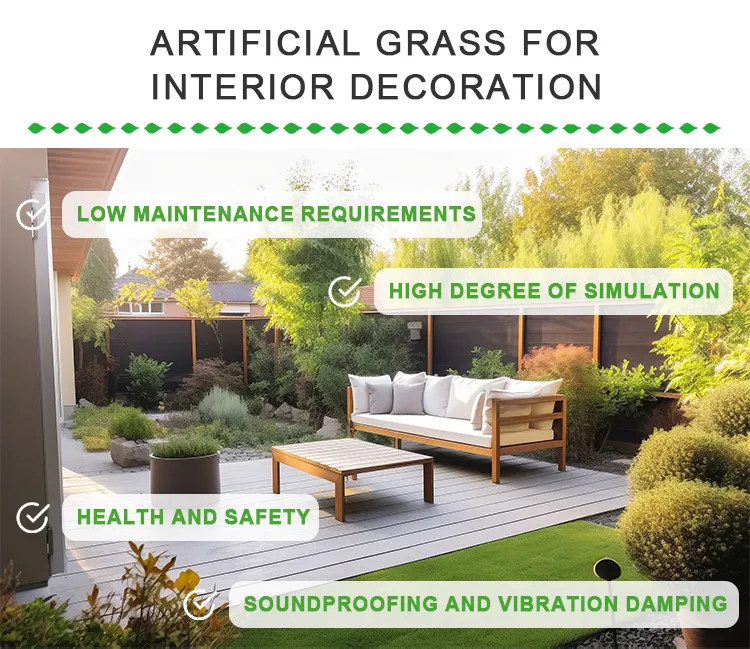
- Afrikaans
- Arabic
- Belarusian
- Bengali
- Czech
- Danish
- Dutch
- English
- Esperanto
- Estonian
- Finnish
- French
- German
- Greek
- Hindi
- Hungarian
- Icelandic
- Indonesian
- irish
- Italian
- Japanese
- kazakh
- Rwandese
- Korean
- Kyrgyz
- Lao
- Latin
- Latvian
- Malay
- Mongolian
- Myanmar
- Norwegian
- Persian
- Polish
- Portuguese
- Romanian
- Russian
- Serbian
- Spanish
- Swedish
- Tagalog
- Tajik
- Thai
- Turkish
- Turkmen
- Ukrainian
- Urdu
- Uighur
- Uzbek
- Vietnamese
Innovative Designs and Benefits of Synthetic Sports Turf for Modern Athletic Facilities
Nov . 06, 2024 16:05 Back to list
The Rise of Artificial Sports Turf Revolutionizing the Playing Field
In the world of sports, the quality of the playing surface can significantly influence performance and safety. Traditional natural grass fields have long been the standard for everything from soccer to football, but in recent years, artificial sports turf has emerged as a game-changer. This innovative material offers numerous advantages that cater to the growing demands of athletes, coaches, and facility managers alike.
Understanding Artificial Sports Turf
Artificial sports turf is a synthetic surface made from polyethylene, polypropylene, or nylon fibers, designed to mimic the appearance and texture of natural grass. Initially developed in the 1960s, advancements in manufacturing processes have led to the production of high-quality turf that closely resembles natural grass both visually and functionally. Contemporary artificial turfs feature multiple fiber types and colors to replicate grass more accurately, reducing the stark, uniform appearance of earlier versions.
Benefits of Artificial Turf
One of the primary advantages of artificial turf is its durability. Unlike natural grass, which can suffer from wear and tear due to heavy foot traffic, artificial surfaces can withstand extensive use without becoming damaged or degraded. This is particularly beneficial for multi-sport facilities that host numerous events throughout the year. Rugged and resilient, modern artificial turf can handle the rigors of various sports, including soccer, lacrosse, field hockey, and football.
Another significant benefit is the consistent playing surface that artificial turf provides. Natural grass fields can become uneven due to weather conditions, leading to unpredictable bounces and increased risk of injury. In contrast, artificial turf maintains its consistency under a variety of conditions, ensuring that athletes can perform to their fullest potential without worrying about hidden hazards lurking beneath their feet.
Enhanced Safety Features
Safety is a paramount concern in sports, and artificial turf has made strides in enhancing player safety. Many modern turfs come equipped with shock-absorbing underlayers that help reduce the risk of injuries, such as concussions and joint issues. Additionally, artificial surfaces are often designed to drain water effectively, preventing the formation of puddles that can lead to slipping hazards. These safety features make artificial turf an attractive option for schools and recreational facilities looking to minimize injuries among athletes.
artificial sports turf

Cost-Effectiveness and Maintenance
While the initial investment in artificial turf can be higher than that of natural grass, the long-term cost savings are significant. Natural fields require ongoing maintenance, including regular mowing, fertilizing, and watering, which can accumulate into hefty expenditures over time. Artificial turf, on the other hand, requires minimal maintenance—no mowing, minimal watering, and occasional brushing to keep the fibers standing upright. This reduction in maintenance not only saves money but also allows facility managers to allocate resources more efficiently.
Environmental Considerations
The environmental impact of artificial turf has been a topic of debate, particularly regarding issues like heat retention, drainage, and the use of non-biodegradable materials. However, manufacturers are increasingly focusing on sustainability, with advancements leadings towards eco-friendly options. Some artificial turfs are now made from recycled materials, and companies are exploring options for recycling old turf upon removal. Moreover, artificial fields can help conserve water, as they do not require the same level of irrigation as natural grass.
Popularity and Future Trends
The acceptance of artificial sports turf has grown rapidly across the globe. From professional sports leagues to local schools, the shift towards artificial surfaces is visible everywhere. The COVID-19 pandemic further accelerated this trend, as facilities sought versatile options that could accommodate a range of sports without the downtime typically required for natural grass maintenance.
As technology continues to evolve, the future of artificial sports turf looks promising. Innovations such as heat-resistant materials and improved drainage systems are on the horizon, ensuring that artificial surfaces remain an attractive option for sports facilities. In addition, as more research is conducted on the health and environmental impacts of artificial turf, manufacturers will likely develop even more sustainable solutions.
Conclusion
Artificial sports turf has revolutionized the landscape of athletic facilities, offering a durable, safe, and cost-effective alternative to natural grass. As the demands of the sporting community continue to grow, the evolution of artificial turf will play a crucial role in shaping the future of sports, making them more accessible and enjoyable for athletes at all levels. Whether for professional leagues or community play, the advancements in artificial turf technology promise a brighter future for the world of sports.
-
The Benefits of Artificial Turf for Indoors
NewsJul.15,2025
-
How Artificial Grass Suppliers Ensure Quality Products
NewsJul.15,2025
-
Artificial Grass and Pets: A Space for Relaxation
NewsJul.08,2025
-
Balcony & Outdoor Decoration with Artificial Grass
NewsJul.08,2025
-
Best Indoor Artificial Grass for Home
NewsJul.07,2025
-
Best Pet Turf for Dogs: Safe & Durable Artificial Grass Options
NewsJul.07,2025
Products categories









